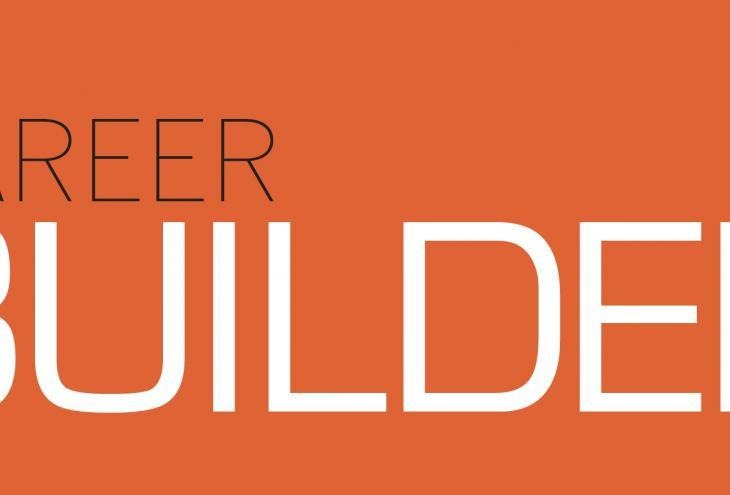The Luce Indigenous Knowledge Fellowship
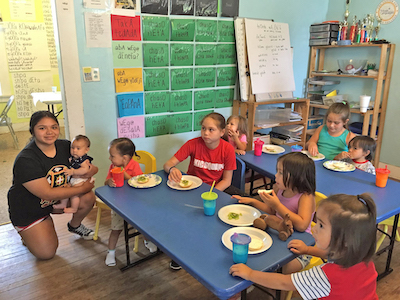
Native Americans engaged in meaningful work that benefits Indigenous people and communities are eligible for the Luce Indigenous Knowledge Fellowship. In partnership with the Henry Luce Foundation, the First Nations Development Institute is awarding its first 10 fellowships in January 2020. The $50,000 fellowships support Native knowledge holders and knowledge makers with the potential to significantly move forward in their fields in ways that will lead to transformative advances for Indigenous communities.
Fellowship recipients will participate in a 12-month enrichment program designed to support the growth, development, and networks of Native leaders. There are three required convenings each year where fellows can pool their collective knowledge to create a community of practice that reaches across professions, geographies, and tribal cultures.
The fellowship is open to both emerging and experienced leaders from a wide variety of fields, including but not limited to agriculture, food systems, youth leadership development, natural resource management, climate change, economic development, journalism, language and cultural revitalization, and traditional and contemporary arts.
Applicants must be a member of a federally or state-recognized Native American or Alaska Native tribe or community, Native Hawaiian, or able to demonstrate significant and long-standing engagement with and commitment to an Indigenous community in the U.S., and be engaged in the development, perpetuation, dissemination of knowledge in their field; at least 18 years old; and a U.S. citizen.
Ask First Nations
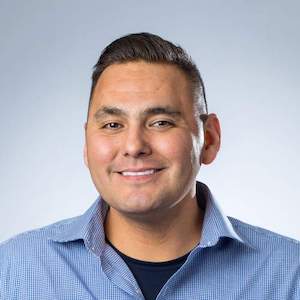
For nearly 39 years, First Nations has been working throughout the U.S. to restore Native American control and culturally compatible stewardship of the assets they own, from land and natural
resources to cultural resources and human potential. We asked Dr. Raymond Foxworth, vice president of development, grantmaking, and communications at First Nations, about the Luce Indigenous Knowledge Fellowship program.
What are some examples of roles in the category of “knowledge holders and knowledge makers?” We are considering applications from people engaged in both traditional Indigenous and Western knowledge fields. Examples of roles include cultural leaders and activists, linguists and language preservationists, writers and storytellers, small business owners and entrepreneurs, health care practitioners, environmentalists, food justice advocates, academics, researchers, and scientists.
How do leaders apply for the fellowship? Candidates who meet the eligibility criteria should complete the online application form that requires uploading several attachments, including three essays. In addition, candidates may submit supplemental documents such as awards and newspaper articles, that demonstrate their commitment to their tribal community. People can also be nominated according to the instructions you’ll find in the application materials.
What topics should the essays address? The three required essays are intended to help applicants define their vision, create a plan, and implement it.
The Statement of Community Impact should describe the applicant’s background and connection to their
community.
The Proposed Fellowship Plan should outline the applicant’s vision for transferring and sharing Indigenous knowledge.
The Budget should describe how the applicant will use their award funds to support their community vision during the 12-month fellowship.
How can the award funds be used? The goal of the fellowship is to provide flexible funding to selected fellows as they seek to create or disseminate knowledge in their field. Award funds may be used to cover costs like living expenses, tuition, conference registration, equipment, travel, and childcare. (The fellowship does not cover health care.)
Can fellows pursue additional support after the conclusion of the 12-month program? After 12 months, fellows will be eligible to apply for a supplemental grant of $25,000 to extend their work for another year and help mentor the next cohort.
Sloan Indigenous Graduate Partnership
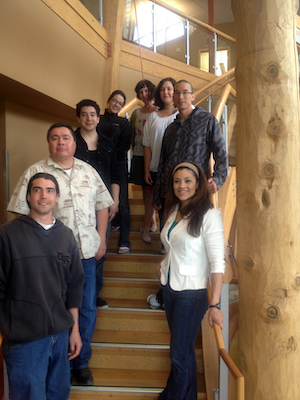 The Sloan Indigenous Graduate Partnership (SIGP) is a scholarship program funded by the A.P. Sloan Foundation to support Indigenous graduate students pursuing master’s and doctoral STEM degrees. The program was established in 2003 to increase the number of Indigenous Americans earning advanced degrees in STEM disciplines. Although American Indians and Alaska Natives make up at least 1.2 percent of the U.S. population, they earn less than 0.5 percent of all doctorates.
The Sloan Indigenous Graduate Partnership (SIGP) is a scholarship program funded by the A.P. Sloan Foundation to support Indigenous graduate students pursuing master’s and doctoral STEM degrees. The program was established in 2003 to increase the number of Indigenous Americans earning advanced degrees in STEM disciplines. Although American Indians and Alaska Natives make up at least 1.2 percent of the U.S. population, they earn less than 0.5 percent of all doctorates.
“This is a vital issue for tribes as they manage economic development,” explains Beverly Hartline, vice chancellor for research and dean of the graduate school at Montana Technological University and the school’s SIGP director. “Having tribal members with STEM expertise in fields like the environment, engineering, and wildlife biology is critical to tribal communities. In just one example, many tribal lands are used for coal, oil, and other extractive industries that are disproportionately managed and operated by non-tribal professionals.”
To champion talented Natives and increase their chances for post-graduate success, the SIGP program provides funding to selected graduate students on a competitive basis. Students selected to be SIGP Scholars may receive MS candidate awards up to $20,000 total and PhD awards up to $40,000. In addition, scholars are assigned mentors and advisors and given opportunities to network with their Native STEM peers. The amount of financial support allocated for tuition and teaching/research assistantships varies by institution.
To be eligible, students must be accepted into a qualifying STEM graduate program at one of the seven participating institutions: the universities of Alaska-Anchorage, Alaska-Fairbanks, Arizona (Tucson), Montana (Missoula), Montana Technological University (Butte), Montana State University (Bozeman), and Purdue University (Indiana).
Candidates must also be enrolled in a federally or state-recognized tribe, have U.S. citizenship, identify a primary research advisor, secure a teaching assistantship or research assistantships, and complete an application form and submit additional materials, including a CV, research statement, and letters of nomination and support.
Ask a Participant
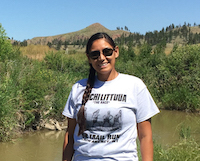
Shanara (“Shanny”) Spang Gion, Northern Cheyenne and Crow, is a SIGP fellowship recipient who recently graduated from Montana Technological University with a master’s in interdisciplinary
studies. Her thesis integrated hydrogeology, policy, technical communication, and Indigenous research methodologies. Spang Gion now serves as executive director of the nonprofit Southeast Montana Area Revitalization Team.
How has this opportunity impacted your education and career path? It’s really made all the difference. When I learned about the program and applied, I had been out of college for 10 years and was working for my tribe. The program gave me a rare opportunity to get back into academia and to study water the way I wanted to, in a way that I think is true to tribal values, worldview, and interests.
Were you interested in science as an undergraduate? After I graduated from Lame Deer High School in Lame Deer, Mont., in 2000, I went to Montana State University–Bozeman and pursued a degree in environmental science. After graduating in 2005, I went to work for the Northern Cheyenne Tribe Environmental Protection Department in positions that focused on opposition to off-reservation development of coal bed methane, and water resources and wetlands management.
How did you become interested in STEM fields of study? I think that came from my grandparents, who instilled in me values about appreciating and caring for the lands that we were on, especially in the context of our contemporary history. Our people were forced down to Oklahoma by the U.S. government, and our tribal leaders fought to bring us back to our traditional territories. So it’s that much more important when you know your ancestors gave their lives for us to live in the place we are accustomed to.
How were you selected for the SIGP? I didn’t know about the program until 2014 when I attended Graduate Horizons at Cornell University. I met Dr. Beverly Hartline from Montana Technological University, and we started talking about research and my interest in water, other natural resources, and Indigenous research methodologies. She told me about the interdisciplinary program at Montana Technological University and their partnership with Sloan. It was a compelling opportunity and I applied. By January of 2015, I had been accepted into the program and began taking distance classes.
What else would you like to share with our readers about the program? The things that immediately come to mind are the financial support and the flexibility. I was a non-traditional student with two children and a husband who held a great position he was hesitant to leave. I was on campus and completed coursework over only one year, and I’ve been able to conduct much of my research remotely. With that flexibility and the financial backing of the fellowship, it allowed my family to successfully juggle our financial and family obligations.
Department of Defense
SMART Program
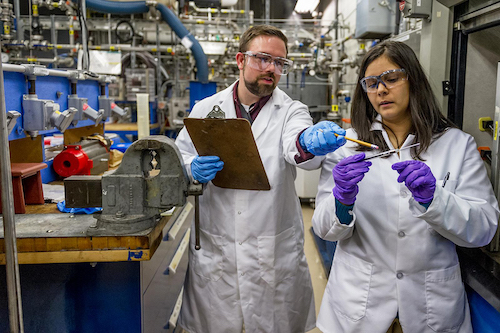 The SMART (Science, Mathematics, and Research for Transformation) Program offers comprehensive scholarships for undergraduate, master’s, and doctorate students interested in STEM careers. The Department of Defense (DoD) sponsors the initiative as part of a broader effort to enhance its workforce with STEM specialists in high-demand fields. For more than 10 years, SMART Scholars have been working in civilian roles within laboratories and agencies of the Army, Navy, Air Force, and other vital DoD organizations.
The SMART (Science, Mathematics, and Research for Transformation) Program offers comprehensive scholarships for undergraduate, master’s, and doctorate students interested in STEM careers. The Department of Defense (DoD) sponsors the initiative as part of a broader effort to enhance its workforce with STEM specialists in high-demand fields. For more than 10 years, SMART Scholars have been working in civilian roles within laboratories and agencies of the Army, Navy, Air Force, and other vital DoD organizations.
In addition to paying full tuition and related educational expenses for SMART Scholars, the DoD offers monthly stipends, health insurance and book allowance, and summer internships at DoD facilities. Student stipends total between $25,000 and $38,000 annually, depending on educational experience. Scholars also agree to continue to use their expertise in civil service roles following graduation. Each participant’s post-degree service commitment is commensurate with the value of their scholarship award.
Internships and job placements are available throughout the country at nearly 200 DoD laboratories and agencies in 40 states. SMART Scholarship applicants should meet the following requirements:
■ U.S. citizen (some exceptions apply) and at least 18 years old
■ Pursuing a degree in a SMART STEM discipline
■ Enrolled and taking classes in a U.S. accredited college or
university (undergraduate applicants only)
■ Minimum 3.0 GPA (on a 4.0 scale)
■ Able to obtain and maintain a security clearance
■ Available to complete at least one eight- to 12-week summer internship (travel stipends may be included)
■ Requesting at least 1.5 years of degree funding
The annual application period begins on August 1 and ends December 1. For more information, email smart@smartscholarship.org.
Ask the Program Manager
Tylar Temple, who serves in the Office of the Under Secretary of Defense for Research and Engineering, is the SMART program manager.
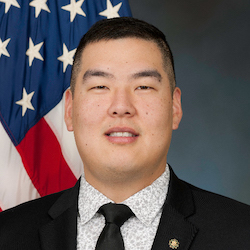
When should students apply to be a SMART Scholar? We require our undergraduate scholars to already be enrolled in a college or university at the time of their application, so they can apply as early as freshman year. Our master’s and PhD scholars can apply at any time during their studies, based in part on their undergraduate transcript.
What are some program highlights? Not only do SMART Scholars receive full tuition and a stipend throughout their academic pursuits, they’re also guaranteed a civilian job in the Department of Defense when they graduate. The success rate of these job matches is high: more than 70 percent of our scholars continue their career with the DoD after they finish their service commitment. In addition, based on a recent study of outcomes, we found that 30 percent of our graduates said that if they hadn’t participated in the program, they wouldn’t have thought of or considered employment at the DoD. That’s more than 800 employees so far who have careers with us now because they became SMART Scholars.
How many scholarships are awarded every year? The number of scholarships annually may vary depending on the DoD budget. For 2019, we’re expecting to award approximately 300 scholarships. By the end of this year, more than 3,000 students will have been awarded the SMART Scholarship for Service since the program’s inception in 2006.
What is the timing for award announcements and funding? Students apply in the late summer/fall for funding for the following academic year. Successful 2019 applicants will receive scholarships that begin in the 2020–2021 academic year. The application process ends on December 1 every year, and we typically announce awards the following April.
What else should applicants know about the program? Prospective scholars should take a look at the application early — it’s not something that someone can complete in a couple of hours. In addition to standard informational questions, we have two essay questions about why they want to work for the DoD and what their goals are personally and professionally. Those questions should be answered in a thoughtful and thorough manner. We typically attract a high number of applicants, so our evaluators are looking for people who not only are qualified, but really want to serve.
Any final points for our readers? A lot of our scholars make an immediate impact within their DoD facility, where they also benefit from being in contact with professionals who have been on similar educational and career paths. They are studying subjects relevant to the research being conducted, and during summer internships they’re able to build professional and mentoring relationships they can fall back on when they need them. Having that additional point of view from an objective and supportive professional is something our scholars come to value.
The Dissertation Institute
dissertationinstitute@gmail.com
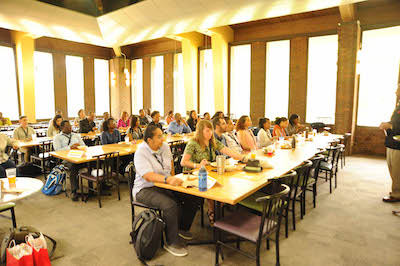 An annual customized, interactive workshop, the Dissertation Institute focuses on underrepresented graduate students in engineering. Research shows that doctoral students, particularly those from underrepresented populations, can get stuck in the writing phase of degree completion for a variety of reasons. In an effort to address this potential hazard head on, Dr. Stephanie Adams of Old Dominion University and Dr. Holly Matusovich of Virginia Tech applied for and received funding through the National Science Foundation (NSF) to develop the Dissertation Institute. The program is designed to provide resources, motivation, mentoring, and a sense of community for doctoral student candidates.
An annual customized, interactive workshop, the Dissertation Institute focuses on underrepresented graduate students in engineering. Research shows that doctoral students, particularly those from underrepresented populations, can get stuck in the writing phase of degree completion for a variety of reasons. In an effort to address this potential hazard head on, Dr. Stephanie Adams of Old Dominion University and Dr. Holly Matusovich of Virginia Tech applied for and received funding through the National Science Foundation (NSF) to develop the Dissertation Institute. The program is designed to provide resources, motivation, mentoring, and a sense of community for doctoral student candidates.
Hosted by Old Dominion University and Virginia Tech, the program helps position PhD candidates to succeed in the dissertation stage of their academic careers. The annual event focuses on strategies for completing the dissertation process and provides networking opportunities for future collaborative career advancement. Participants work alongside each other and receive guidance from faculty advisors as they build new writing habits, work on their dissertation, and learn skills that will help them continue making progress when they return to their institutions.
African American, Native American, Pacific Island, and Hispanic American PhD candidates are welcome to apply for this opportunity. Accepted participants receive reimbursement for travel costs up to $500 as well as onsite housing and meals for the duration of the weeklong curriculum. The 2019 program takes place at the University of California San Diego. The deadline is usually in early March and the program is usually held in June.
Ask a Program Founder and Co-Leader
Dr. Holly Matusovich is an associate professor in Virginia Tech’s Department of Engineering Education. She co-leads the Dissertation Institute with Dr. Stephanie Adams, dean of the Frank Batten College of Engineering and Technology at Old Dominion University. They launched the program in 2017.
What are some program highlights? This is a great opportunity for students from groups who are traditionally underrepresented in engineering. We bring them together to build a cohort and
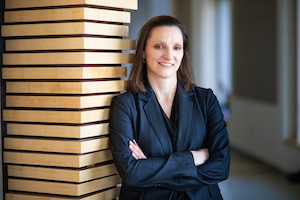
provide a sense of “it’s not just me.” Often, people from underrepresented groups can feel isolated, so bringing them together with peers who may be wrestling with similar issues is an important part of the program. It’s something that a virtual experience wouldn’t necessarily provide. An intentional aspect of the design is that we include workshops to help students build skills like time management, writing, and defending their dissertation. Also, we have writing clusters in groups of six to eight that are facilitated by a faculty member to offer time for reflection and discussion.
What are a few of the skills you’ve seen participants develop? The feedback we get tends to focus on skills like managing schedules and priorities, and learning to say no. The literature shows that students from underrepresented groups get asked to do more things because people are looking for their perspective, yet if there are fewer of them, they can end up overcommitted. Overall, I would say participants appreciate the opportunity to build the interactional skills that can help them really take charge of — and own — their PhD process.
How has participation made a positive impact on students? Something we love is that when students graduate, they tend to get in touch to thank us for the Dissertation Institute, and they consistently point to it as an experience that helped pave their pathway. They talk about things like getting remotivated, remembering why they wanted to pursue their PhD in the first place, what it means to gain a network of people, and also just having the time away from their own campus to focus and set their sights on getting it done. One of the things we tell them is that “a good dissertation is a ‘done dissertation,’” and participants reflect on how that helped them push through.
What would you say to students who’re unsure if the program is right for them? Students have to be ready to put in a hard week. It’s pretty intense, and even when people aren’t in scheduled group time, we encourage them to write and continue to make progress. So participants have to be in a place where they’re ready to buckle down, make a commitment for the week, and be all in. It’s not a week structured for people to do other work on the side. So often on their own campuses, our participants are getting pulled in different directions. This is a gift of time they can give themselves to be focused on their doctorate and make real progress.
What else should prospective applicants know about the program and its impact? The focus of the program is on participants completing their dissertation process. At the end of the week, we talk a great deal about how people can assess the good habits and skills they’ve learned and take them back to their own campus. We discuss changes they may have to make so they can manage their schedules to sustain their writing and continue to make progress. Setting them up to be successful beyond that week and earn their PhDs is a very important part of the work, and the central objective of the program.
Career Discovery Internship Program (CDIP)
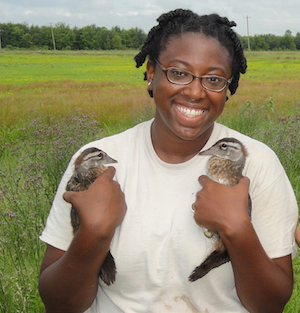 If you’re a college freshman or sophomore interested in gaining a better understanding of the outdoors, the U.S. Fish and Wildlife Service (FWS) may have the summer internship that’s just right for you. The annual Career Discovery Internship Program (CDIP) is an expense-paid summer internship offered to nearly 300 students from culturally and ethnically diverse backgrounds. The CDIP was founded in 2008 in partnership with the Student Conservation Association (SCA) to prepare the next generation of wildlife professionals by introducing students to conservation careers.
If you’re a college freshman or sophomore interested in gaining a better understanding of the outdoors, the U.S. Fish and Wildlife Service (FWS) may have the summer internship that’s just right for you. The annual Career Discovery Internship Program (CDIP) is an expense-paid summer internship offered to nearly 300 students from culturally and ethnically diverse backgrounds. The CDIP was founded in 2008 in partnership with the Student Conservation Association (SCA) to prepare the next generation of wildlife professionals by introducing students to conservation careers.
Students selected for the program spend 12 weeks at a national wildlife refuge learning from wildlife experts about all aspects of refuge management, ranging from visitor services to education and resource management. The hands-on experience includes paid housing, a weekly living allowance, and a travel allowance. Each participant is assigned a Fish and Wildlife Service mentor and may potentially become eligible for an AmeriCorps Education Award.
To apply for this opportunity, you should be a full-time, first- or second-year college student for the upcoming academic year. In addition, you must be a U.S. citizen or permanent resident, have a valid U.S. driver’s license, pass a criminal background check, and be available for 13 weeks at the beginning of the upcoming summer.
Ask FWS
The FWS and SCA designed the CDIP to introduce ethnically diverse freshmen and sophomores from all over the United States to fish and wildlife careers. The FWS team spoke with Winds of Change about the program and its benefits.
Can you say more about what you’re looking for in potential interns? We’re looking for college students who self-identify as being from diverse racial and ethnic backgrounds. These are students who are open-minded to new experiences and to learning how to work in team environments. Candidates should also have references willing to support their application to the program. We’re interested in involving interns who will be eager to act as ambassadors for FSW.
Do you consider applicants who don’t have a lot of outdoor experience, or who don’t currently major in a related field? Yes, all majors and levels of outdoor experience are welcome. We understand that some applicants may live in urban settings and don’t necessarily have much outdoor experience. It is more important to be adventurous and ready to try new things. The start of the week of the internship is dedicated to a weeklong orientation where we introduce mentors and students, provide training, and establish a solid foundation for interns’ summer experiences.
Where do the internships take place? Our internships take place throughout the United States. Wildlife refuge sites for each internship experience include Alaska and locations in the Southwest, Midwest, Southeast, and Northeast.
How comprehensive is the benefits package, and can you explain the potential eligibility for the AmeriCorps Education Award? Our benefits package is worth up to $5,800 and covers the weeklong orientation, housing, a weekly living allowance, and a travel allowance. After completing their 12 weeks of service, interns may become eligible for an AmeriCorps Education Award of up to $1,612. These awards can be used to pay educational expenses at eligible post-secondary institutions or to repay qualified student loans. It’s also important to note the benefit of being assigned an FWS mentor, who can become an invaluable source of support during the internship and beyond.
What is the timeline forthe applications process and internship? Students who are interested in applying for the program should watch for an announcement online. Generally speaking, the application process begins in January and the weeklong orientation takes place in late May. The orientation is followed by the 12-week onsite internship.


